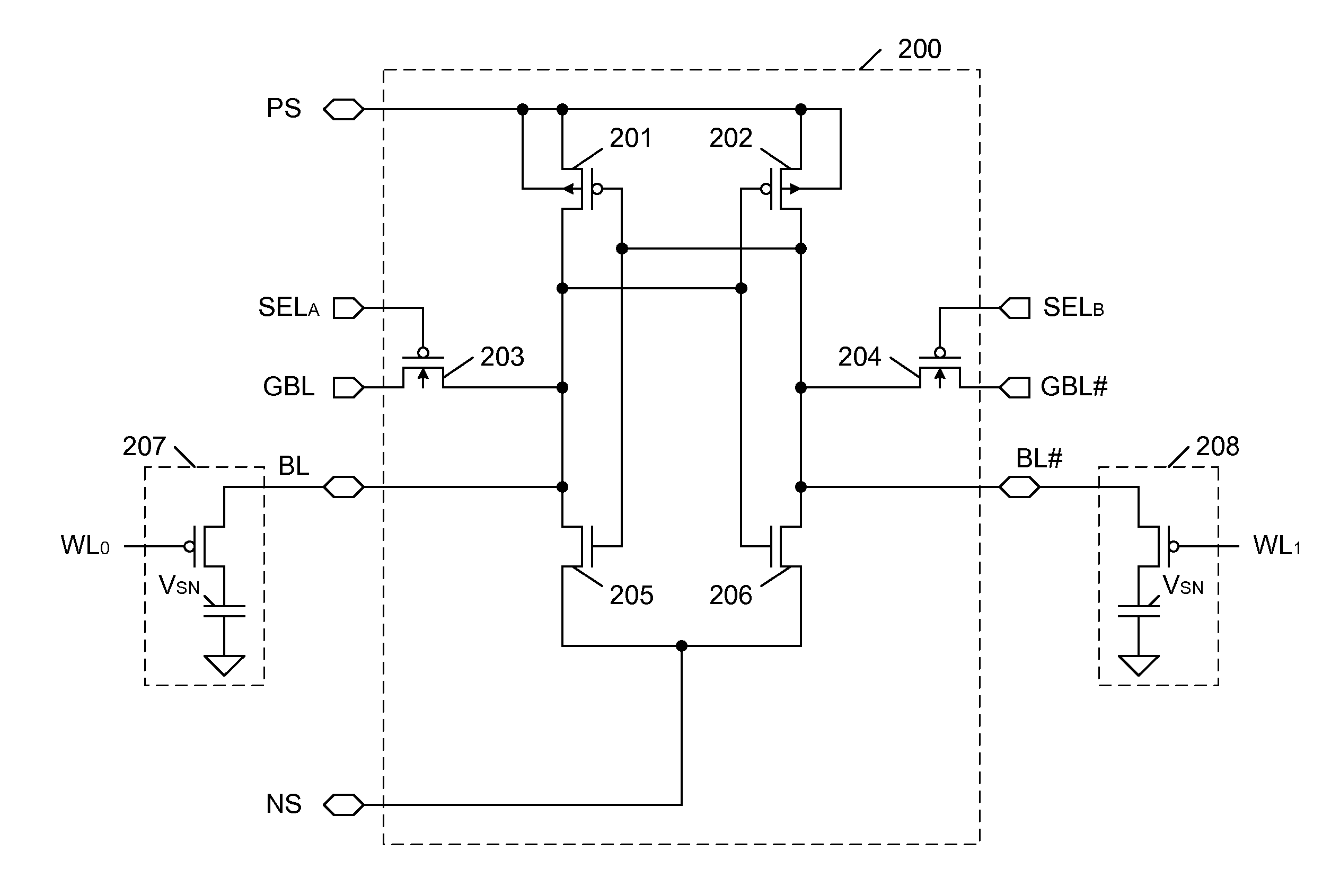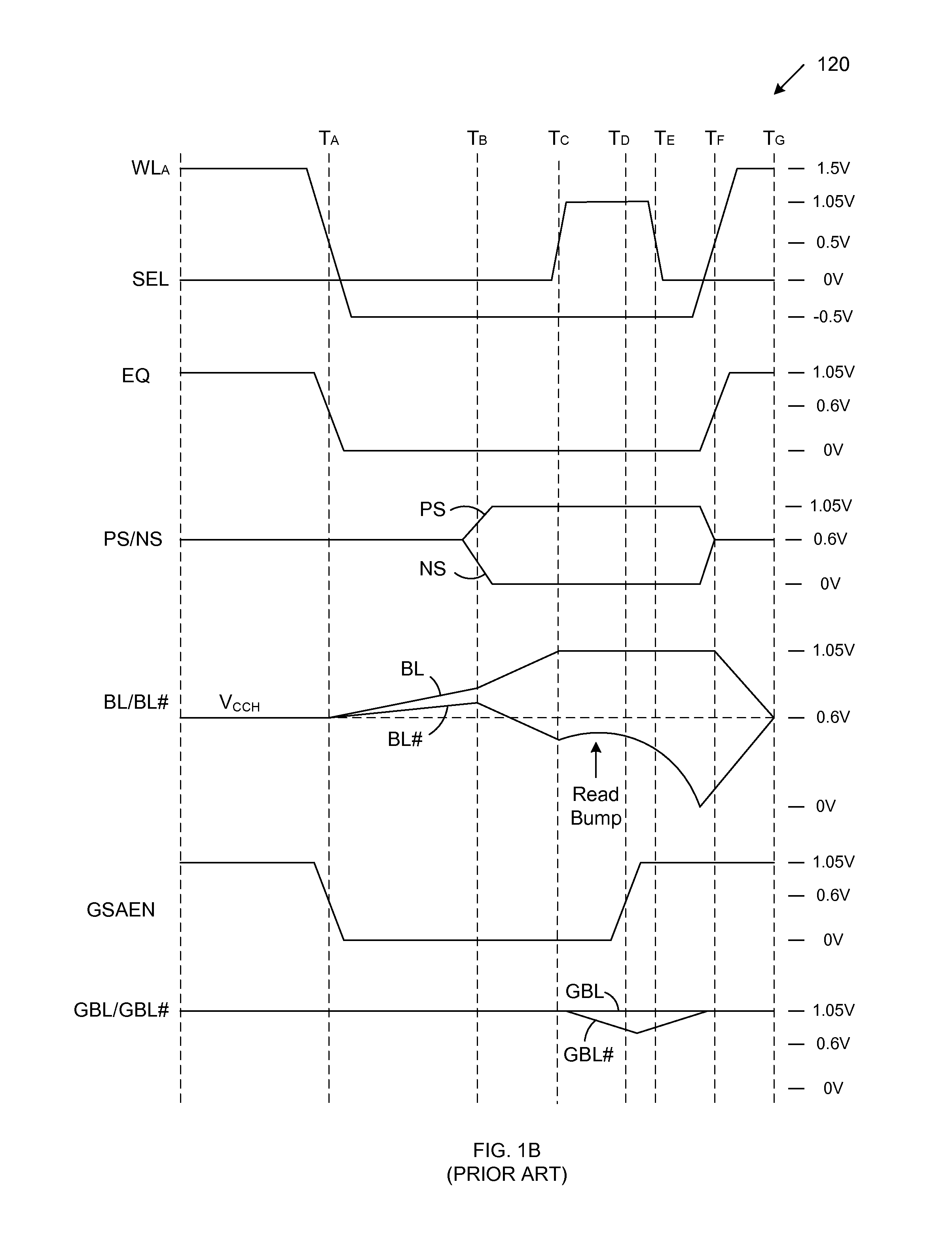Methods For Accessing DRAM Cells Using Separate Bit Line Control
a bit line control and access method technology, applied in the field of sense amplifiers, can solve the problems of up to 20-30% signal loss, the storage node voltage v/sub>sn/sub> of the pmos bit cell b>109/b> has not had enough time to reach the desired voltage of 0 volts, etc., and achieve the effect of improving the access tim
- Summary
- Abstract
- Description
- Claims
- Application Information
AI Technical Summary
Benefits of technology
Problems solved by technology
Method used
Image
Examples
Embodiment Construction
[0038]FIG. 2A is a circuit diagram of a six transistor (6T) sense amplifier circuit 200 and PMOS bit cells 207-208 in accordance with one embodiment of the present invention. Sense amplifier 200 includes PMOS transistors 201-204 and NMOS transistors 205-206, which are connected as illustrated. Transistors 201 and 205 are connected to form a first inverter, and transistors 202 and 206 are connected to form a second inverter. These two inverters are cross-coupled to form a latch circuit, which is coupled to complementary bit lines BL and BL#. Exemplary PMOS bit cells 207 and 208 are shown coupled to bit lines BL and BL#, respectively, for purposes of illustration. It is understood that a plurality of bit cells are typically connected to each of the bit lines BL and BL#, wherein each of the bit cells has a corresponding word line.
[0039]The source and body regions of PMOS transistors 201-202 are coupled to receive a control voltage PS. The source regions of NMOS transistors 205-206 are ...
PUM
 Login to View More
Login to View More Abstract
Description
Claims
Application Information
 Login to View More
Login to View More - R&D
- Intellectual Property
- Life Sciences
- Materials
- Tech Scout
- Unparalleled Data Quality
- Higher Quality Content
- 60% Fewer Hallucinations
Browse by: Latest US Patents, China's latest patents, Technical Efficacy Thesaurus, Application Domain, Technology Topic, Popular Technical Reports.
© 2025 PatSnap. All rights reserved.Legal|Privacy policy|Modern Slavery Act Transparency Statement|Sitemap|About US| Contact US: help@patsnap.com



